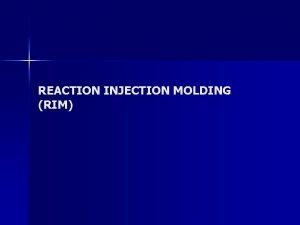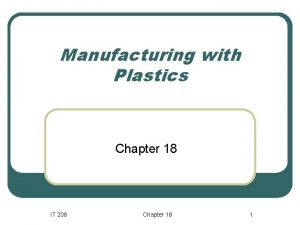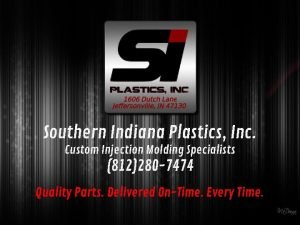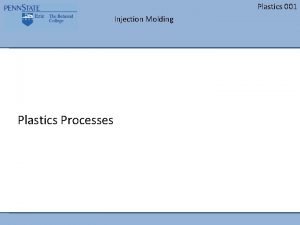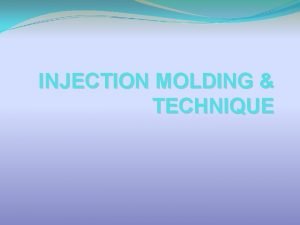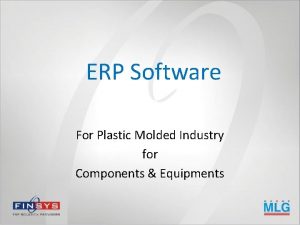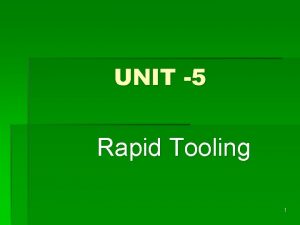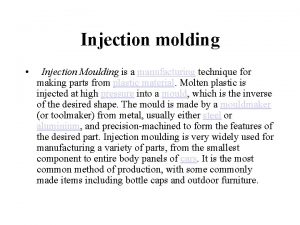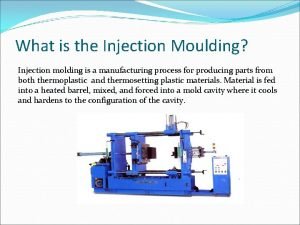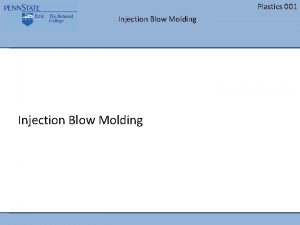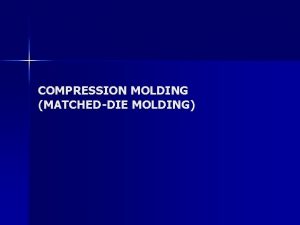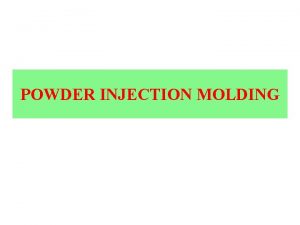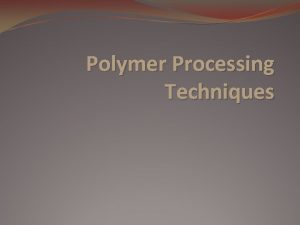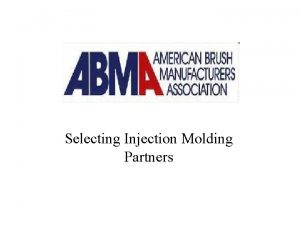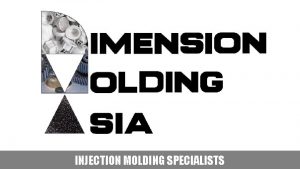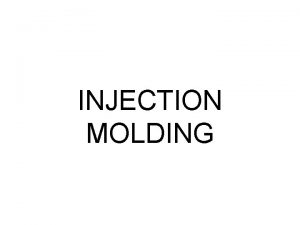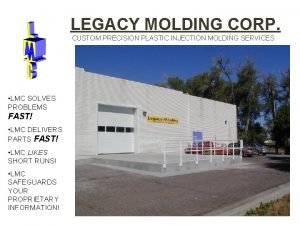REACTION INJECTION MOLDING RIM RIM PROCESS n two











- Slides: 11

REACTION INJECTION MOLDING (RIM)

RIM PROCESS n two highly reactive liquid monomers are carefully metered, brought together in a mixhead, and immediately injected into a heated mold under low pressure

RIM VARIATIONS n neat resin reinforced reaction injection molding (RRIM) - fillers (including chopped glass, carbon/graphite fibers) can be incorporated into one or both monomers structural reaction injection molding (SRIM) reinforcement placed in mold before injecting the reactive liquid monomers

SCHEMATIC OF RIM PROCESS

RESINS USED IN RIM PROCESS n polyurethane (most common) – two liquid monomer components n n polyol isocyanate – high CTE (unreinforced 60 - 90 x 10 -6 in/in/°F) – low modulus (flexural, 20 - 300 ksi) n dicyclopentadiene (dcpd) – see Telene website

REINFORCEMENT USED IN RIM PROCESS n RRIM – chopped, milled fibers (glass, carbon/graphite) – usually added to polyol n SRIM – – glass, carbon/graphite, aramid fabric (woven, unidirectional, multiaxial) mat preform

RIM PROCESS AND EQUIPMENT n day tanks – store unfilled components and filled (reinforced) components – slowly and continuously agitate by mixing impellers to prevent settling of fibers – may have heating jackets for temp control – pressurized at 15 - 60 psi n metering cylinders fill with components from day tanks – components could be moved directly from the pressurized tanks with air pressure, however usually transferred with the assistance of feeder pumps – feeder pumps can provide continuous recirculation (maintain filler in suspension and uniform temp)

MIXING OF COMPONENTS n n n n after metering cylinders filled, they are driven forward by hydraulic pressure to deliver components to mixhead at a known rate (delivery of the two components must be closely synchronized to ensure a uniform reaction and consistent properties in cured part) during first part of plunger travel, valve to mixing chamber is closed components are recirculated through head into return lines and back to day tanks after preliminary recirculation - mixhead valve is opened, components enter the chamber to be mixed mix chamber is usually small cylinder - components enter from opposite sides of chamber mixhead is designed to develop turbulence in the mix chamber to intimately mix the two components turbulence created by stream impingement at high pressure (1, 500 3, 000 psi) streams should have equal momentum at the time they meet

FILLING THE MOLD n n after metering the shot, mixhead valve is closed, components recirculated back into day tanks metered shot is cleared from mixing chamber by a close fitting ram and flows directly into mold (no solvent flush required) mold normally filled from bottom so air can easily push out ahead of flow shot fills mold to about 90% and expansion during chemical reaction of the polyol and isocyanate completes the fill

CURING AND DEMOLDING n n n components react and gel within 2 - 10 secs from the start of injection mold remains closed for a period of time to allow sufficient cure so part can be removed and handled without damage (30 - 90 secs) knockout pins, automatic slides, or pneumatic devices in the mold used to assist with demolding for small flexible parts may use rubber spatula to pry part loose or insert air nozzle and blow off for most resin formulations, parts are post-cured in an oven

ADVANTAGES/DISADVANTAGES OF RIM PROCESS n n many of the same advantages/disadvantages as RTM process differences with RTM process – RIM resin builds viscosity rapidly (higher average viscosity during mold filling) n n n applications must be simple geometries SRIM preform must be less complex and lower in reinforcement content parts do not normally flash out of mold parting line sufficiently to require sealing beyond metal land area or a pinch off around perimeter of part (low viscosity of RTM resin requires gasket or oring) – highly reactive nature of RIM resin systems leads to cycle times currently faster than achieved with RTM process – mix ratios of RIM resin systems nearly 1: 1 in volume n n n ideally suited to impingement mixing process self-cleaning mix element RTM ratios (as high as 100: 1 by volume) require mixing in a static mixer and subsequent solvent flush
 Reinforced reaction injection molding
Reinforced reaction injection molding Chapter 18 plastic laminates
Chapter 18 plastic laminates Injection molding indiana
Injection molding indiana Disadvantages of structural foam molding
Disadvantages of structural foam molding Types of undercut in injection molding
Types of undercut in injection molding Erp software for plastic injection molding
Erp software for plastic injection molding Moulding defect
Moulding defect Indirect tooling
Indirect tooling Injection molding gate blush
Injection molding gate blush Husky injection molding buffalo ny
Husky injection molding buffalo ny Intitle:injection molding
Intitle:injection molding Blow molding advantages and disadvantages
Blow molding advantages and disadvantages
